The Graphs
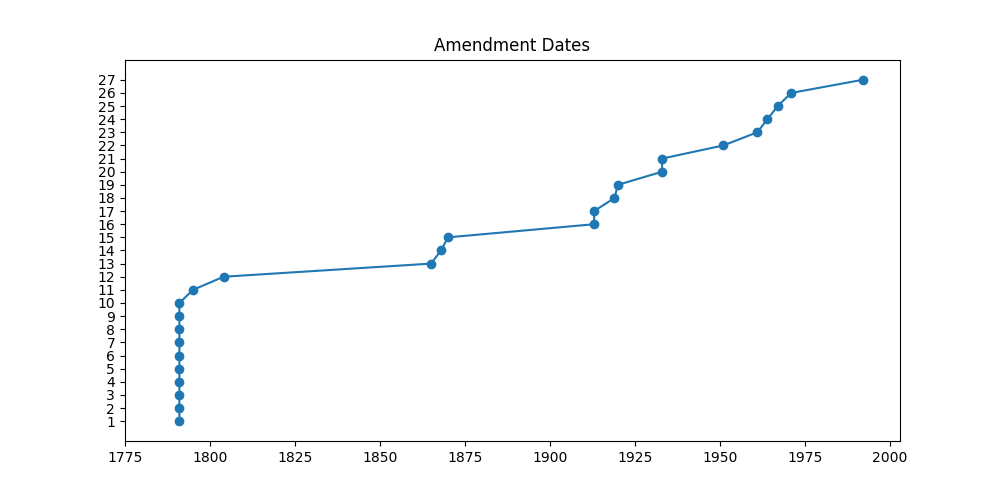
The Amendment Number is vertical, while the date it was ratified is on the horizontal. So, this graph shows when each Amendment was ratified.
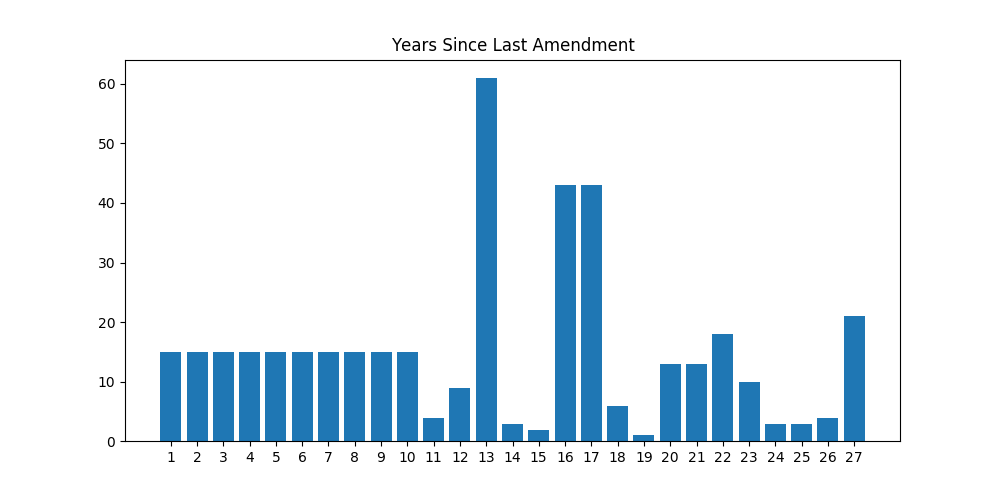
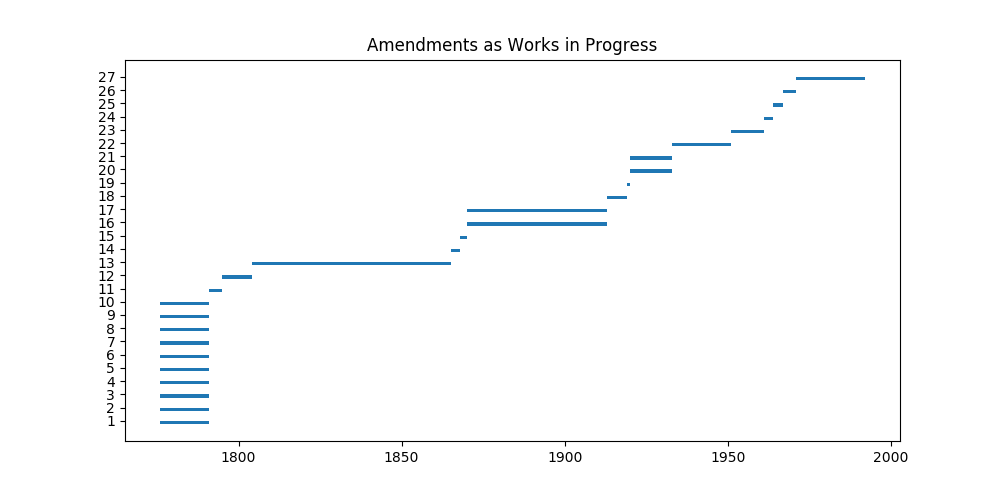
The data used for both of these graphs is the same; but to my mind, the one on the right is easier to understand.
That said, on the left, we have how many years passed since the previous Amendment was ratified on the vertical and the Amendment Number on the horizontal. If two or more Amendments were ratified in the same year, they both get the same time-lag rating (hence, why the first ten Amendments all indicate the same length of time since the last Amendment).
But like I said, the graph on the right is clearer to me. Laid out vertically is the Amendment Number, while horizontally is a line connecting the year in which the last Amendment was ratified (and thus, quite possibly when they started working on this Amendment; yeah, I know that's not how it works) and the year in which the Amendment that the line represents was ratified (thus, perhaps, indicating how long a political peace and/or general satisfaction with the philosophical status quo lasted). Or if that is unclear (and you want me to explain it without adding any extraneous conjecture), the horizontal lines represents the time period in which no new Amendment was ratified.
Without a doubt (to me, anyhow), the graph on the right is the best graph on the page.
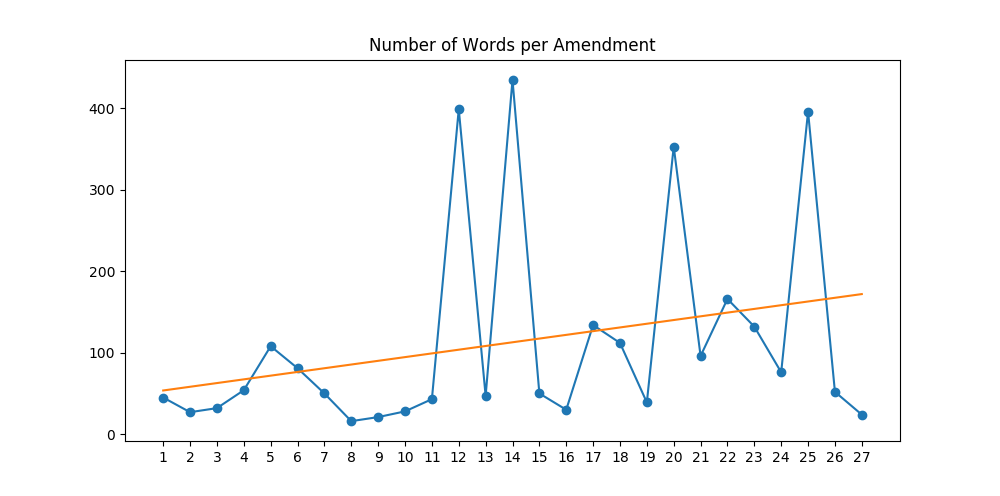
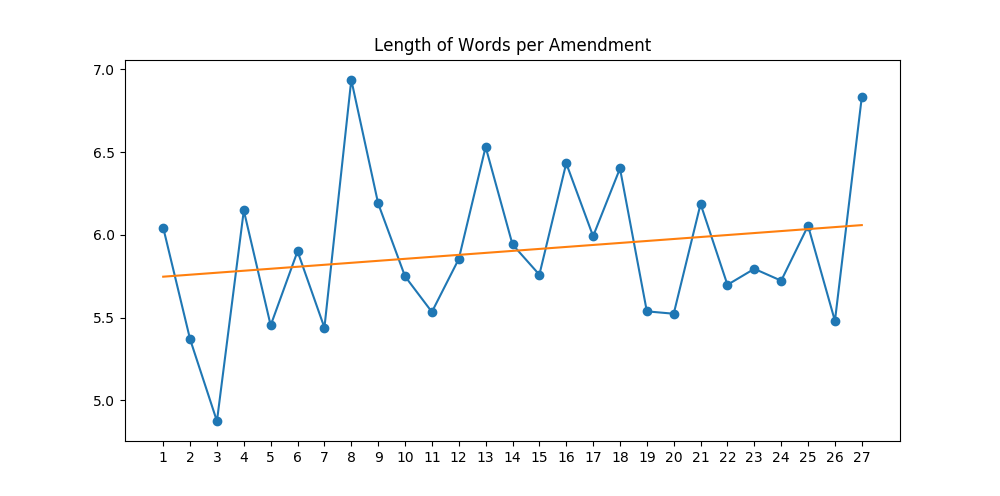
These two graphs are intended as metrics of Amendment Complexity (Legal Complexity being an innately bad thing in my mind).
In both of the above graphs (and the three that follow), the Amendment Number is laid out horizontally.
For the graph on the left, the vertical indicates the word count for each Amendment.
While for the graph on the right, the vertical indicates the average Character Count of Each Word in the Amendment (talk about a mouthful).
The upward sloping orange line is the trend line; and as such, indicates both an increase in the Word Count and Word Size as the Amendment Number increases (and thus, as time goes by).
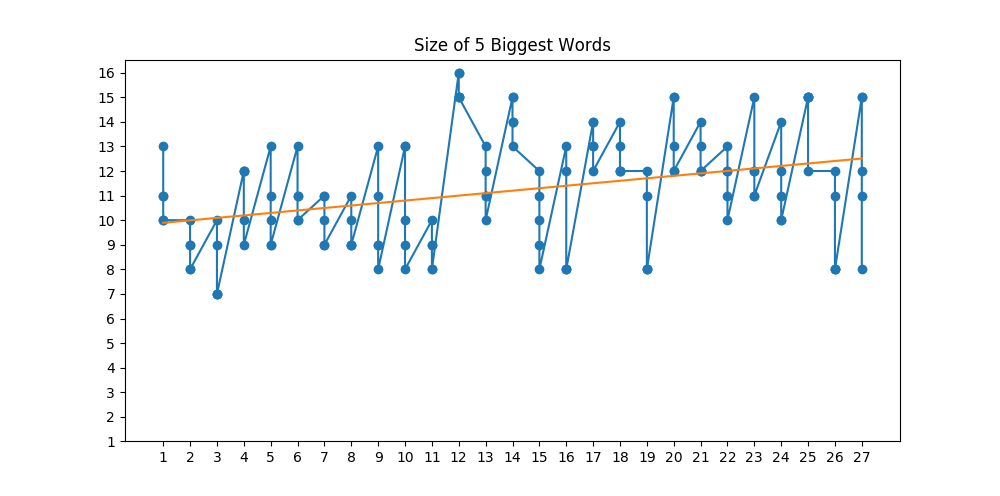
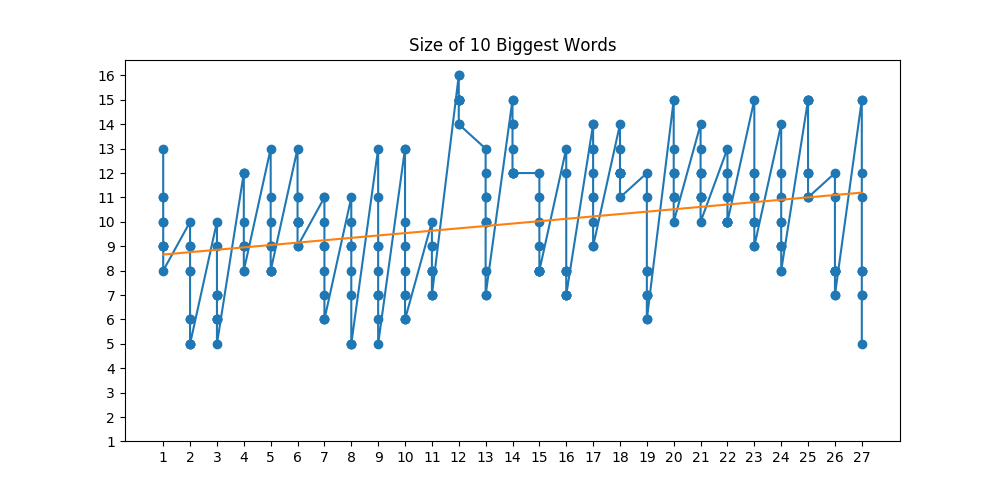
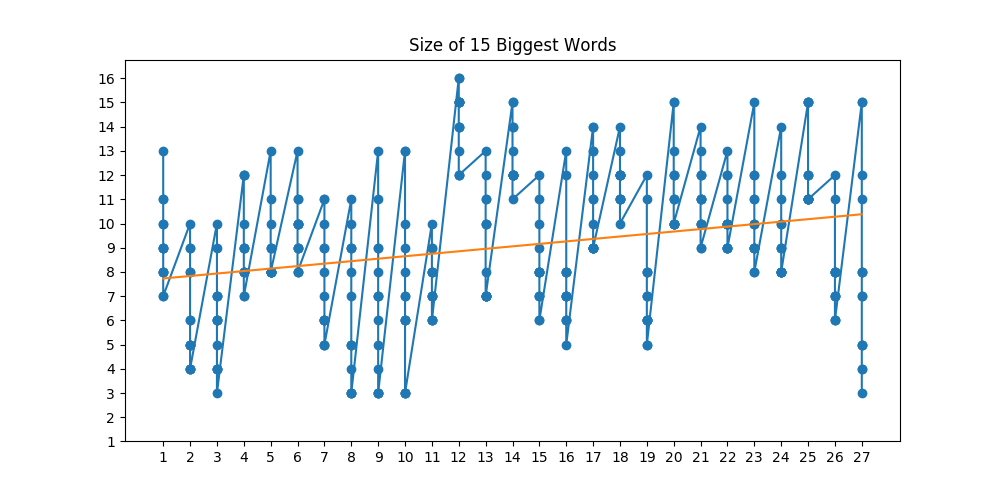
These final three graphs are intended to highlight the use of highfalutin words; and as such, show the Character Count of the five, ten, and fifteen longest words in each Amendment.
The blue dots indicate individual hits (Amendment I includes words that have ten, eleven, and thirteen character each, but no words that contain twelve characters). While, the orange trend line, once again, is sloping upwards.
It would have made sense to compare some of the larger words from Amendment to Amendment, because after all, all those fifteen character words in the later Amendments might be the same (perhaps indicating some particular line of boilerplate or linguistic necessity), but I didn't bother to list the words out and I'm not going to now (mainly, because by the time I get around to writing up a webpage like this, I'm usually done -- like, way done -- with the underlying concern: i.e. I'm not going to be crunching this data set any further... or at least, not at this time).
Future Work
I would, also, have liked to determine whether the length and complexity of an Amendment is negatively correlated (as I assume that it is) to my 'appreciation' of said Amendment, but as I cannot come up with any easy way to measure my 'appreciation' of any given Amendment (especially one that does not include perceived complexity as part of that rating), I've sort of stalled out on that part of the project (or what is, in truth, an extension of the project), as well.
That might (yes, it just might) come off as being... um, a bit lazy. So by way of defence, let me try and explain the difficulty I am having in concocting an
Approval Rating (yeah, that's a better name for it) for the Amendments.
The complete text of
Amendment XIX is as follows:
The right of citizens of the United States to vote shall not be denied or abridged by the United States or by any State on account of sex. Congress shall have power to enforce this article by appropriate legislation.
So, let's try to Grade this Amendment, shall we?
- It's short, so that's good.
- It gives women the right to vote, which is also good.
- But women should have already had the right to vote, so although I want to give this procedural change a thumbs up, I, also, want to give a thumbs down to the fact that such a change was required.
- Furthermore, that last sentence is pure boilerplate of the sort not present until the Thirteenth Amendment (but common thereafter); so if one were to take off points for boilerplate (something I am inclined to do), all one is doing is rating the later Amendments more negatively than the former due to changes in (what may be nothing more than) legal style.
So, it's hard for me to say whether
Amendment XIX is a 'Good Amendment' or not, especially after one considers that
Amendment XV (ex-slaves cannot be denied the right to vote),
Amendment XIX (women cannot be denied the right to vote),
Amendment XIV (those who fail to pay a poll tax cannot be denied the right to vote),
Amendment XXVI (those eighteen years and older cannot be denied the right to vote) can all be replaced by the simple sentence:
All Citizens of the United States have the right to vote; and this right cannot be denied or abridged by any means or for any reason.
So, although I am in favor of
Amendments XV,
XIX,
XIV, and
XXVI, I find the structure of these particular Amendments cumbersome (they grant negative rights) and the ideas they encompass can be communicated in a much simpler fashion:
All Citizens May Vote!
And/or:
Voting! It's what a Democracy is all about!







